Part 1. Learn lithium button batteries?
Definition & Core Characteristics
Lithium button batteries (also called coin cells) are non-rechargeable, single-cell batteries that use lithium chemistry for stable, long-lasting power. Unlike cylindrical AA or AAA batteries, they are flat, disc-shaped, and optimized for compact devices.
Key Technical Traits:
- Nominal voltage: 3V (far higher than alkaline’s 1.5V)
- Chemistry: Lithium manganese dioxide (Li-MnO₂) in most consumer models
- Operating range: -30°C to +60°C (making them reliable in extreme conditions)
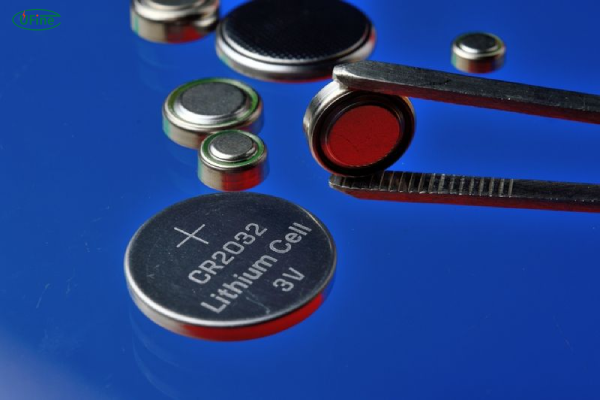
| Feature | Lithium (CR) | Alkaline (LR) | Silver Oxide (SR) |
|---|---|---|---|
| Voltage | 3.0V | 1.5V | 1.55V |
| Energy Density | High (220mAh in CR2032) | Moderate (~100mAh in LR44) | High (165mAh in SR44) |
| Self-Discharge | <1% per year | ~5% per year | ~3% per year |
| Cost | Moderate | Low | High |
Why Lithium Wins?
Feature Lithium (CR) Alkaline (LR) Silver Oxide (SR) Voltage 3.0V 1.5V 1.55V Energy Density High (220mAh in CR2032) Moderate (~100mAh in LR44) High (165mAh in SR44) Self-Discharge <1% per year ~5% per year ~3% per year Cost Moderate Low High Why Lithium Wins?
- Voltage stability – Unlike alkaline, lithium maintains near-constant voltage until depletion.
- Leak resistance – Alkaline cells often corrode; lithium cells rarely do.
- Cold performance – Lithium works in freezing temps where others fail.
What is The Self Discharge Rate of Li Ion Battery
Part 2. 3 Major lithium button battery types
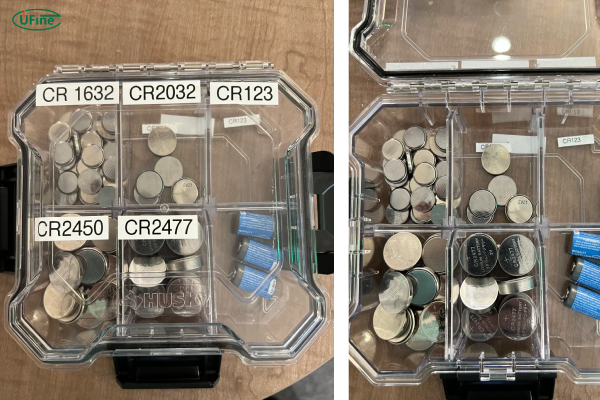
Not all button batteries are the same. Their size, capacity, and application vary significantly. Here’s a detailed breakdown:
1. CR2032 – The Industry Standard
- Dimensions: 20mm diameter × 3.2mm height
- Capacity: 220mAh
- Primary Uses:
- Motherboard BIOS chips
- Car key fobs
- Digital thermometers
- Why Dominant?
- Perfect balance of size and capacity
- Universally available
2. CR2025 – The Slim Alternative
- Dimensions: 20mm × 2.5mm
- Capacity: 170mAh
- Best For:
- Fitness trackers (like Fitbit)
- Slim remote controls
- Trade-off: 23% less capacity than CR2032 due to reduced thickness.
3. CR2016 – The Ultra-Thin Specialist
- Dimensions: 20mm × 1.6mm
- Capacity: 90mAh
- Ideal For:
- Miniature Bluetooth trackers (Tile)
- Some hearing aids
- Limitation: Short lifespan due to low capacity.
Part 3. Why engineers prefer lithium button cells
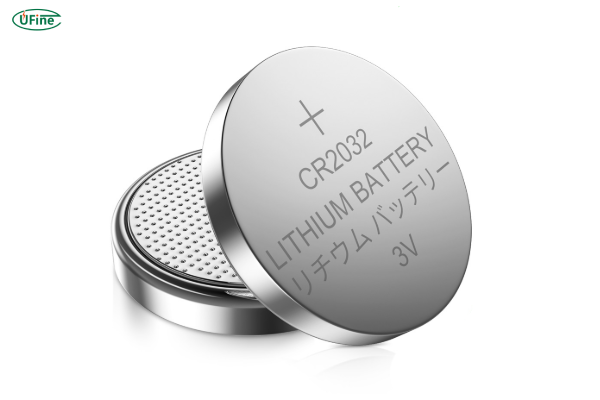
A. Shelf Life – A Decade of Readiness
- Most lithium coin cells lose less than 1% charge per year.
- Compare that to alkaline cells, which deplete 5-10% annually.
- Real-world impact: A CR2032 stored since 2015 likely still works today.
B. Voltage Stability – No Slow Death
- Alkaline batteries gradually decline from 1.5V to 0.9V.
- Lithium cells stay near 3V until sudden drop-off.
- Why it matters: Devices like digital calipers need steady voltage for accuracy.
C. Leak Resistance – Protecting Expensive Electronics
- Alkaline leaks destroy circuits (a 200motherboardruinedbya200motherboardruinedbya1 battery).
- Lithium cells rarely leak, even after full discharge.
Part 4. Button cell battery size
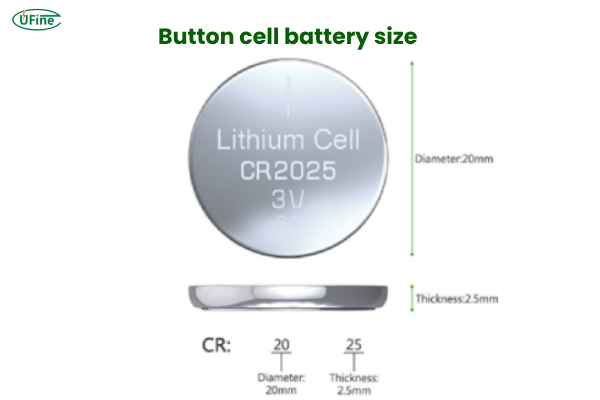
You’ve probably noticed codes like CR2032 or CR2025 on button batteries. These aren’t random—they follow a standardized sizing system:
-
First two letters (e.g., “CR”) = Chemistry (C for lithium, L for alkaline, S for silver oxide).
-
Next two digits (e.g., “20”) = Diameter in millimeters (20mm).
-
Last two digits (e.g., “32”) = Thickness in tenths of a millimeter (3.2mm).
Example:
-
CR2032 = Lithium, 20mm wide, 3.2mm thick.
-
CR1216 = Lithium, 12mm wide, 1.6mm thick.
This system helps engineers pick the right battery for tight spaces.
Button Battery Sizes Explained for Everyone
Part 5. 3V lithium button batteries
Most lithium button cells output 3 volts, which is ideal because:
✔ Efficiency – Many microelectronics (like CMOS chips) are designed for 3V logic.
✔ Minimal circuitry – No need for voltage regulators, reducing device cost.
✔ Longevity – Higher voltage means fewer cells needed, simplifying designs.
Exceptions:
-
Some hearing aid batteries run at 1.4V (zinc-air chemistry).
-
Rechargeable Li-ion coin cells (like LIR2032) deliver 3.7V but are rare.
Part 6. Are lithium button batteries rechargeable?
99% are NOT rechargeable. Attempting to recharge a standard CR-series cell can cause:
🔥 Overheating
💥 Rupture or explosion
⚠ Permanent damage to devices
Exceptions:
-
LIR2032 – A rechargeable variant (3.7V, lower capacity).
-
ML series – Manganese lithium rechargeables (used in industrial applications).
Rule of thumb: Unless labeled “rechargeable”, assume they’re single-use.
Part 7. How long do lithium button batteries last?
In storage:
-
10+ years if unused (thanks to <1% annual self-discharge).
In devices:
-
Low-drain gadgets (watches, thermometers): 3-7 years.
-
Moderate-drain devices (key fobs, bike computers): 1-3 years.
-
High-drain electronics (LED lights, active RFID tags): Weeks to months.
Pro tip: Buy from reputable brands (Panasonic, Sony). Cheap knockoffs often die prematurely.
Part 8. Where you’ll find them
A. Everyday Consumer Electronics
- Watches (Casio, Seiko): A single CR2025 lasts 5+ years.
- Car Key Fobs (Toyota, BMW): CR2032 enables 500+ feet range.
B. Critical Medical Devices
- Hearing Aids: Some use zinc-air, but advanced models rely on lithium.
- Glucose Monitors: CR2032 ensures continuous monitoring.
C. Hidden Tech Applications
- Motherboard BIOS: Without a CR2032, your PC forgets settings.
- IoT Sensors: Wireless sensors in agriculture use CR2450 for longevity.
Part 9. Lithium vs. non-lithium button batteries
Let’s compare them side by side
| Type | Voltage | Lifespan | Cost | Best Use |
|---|---|---|---|---|
| Lithium (CR) | 3V | Up to 10 years | Mid-range | Electronics, key fobs |
| Alkaline (LR) | 1.5V | 1–2 years | Low | Toys, small remotes |
| Silver Oxide (SR) | 1.55V | 3–5 years | High | Watches, medical gear |
Lithium batteries last longer and offer more power, but cost slightly more than alkaline ones. Silver oxide batteries have stable voltage but usually come in fewer sizes.
Part 10. How to dispose of lithium button batteries?
Lithium button batteries are safe when used correctly. But they can be very dangerous if swallowed—especially by children.
If swallowed, these batteries can cause serious internal burns in as little as two hours. Always:
- Store them out of reach of children and pets
- Use child-safe packaging
- Avoid mixing old and new batteries in a device
- Never leave loose batteries lying around
- Tape the terminals before disposal to prevent short circuits
Safety is everything when it comes to these small but powerful batteries.
Part 11. How to test & replace lithium button batteries?
Not sure if your button battery still has juice? You can test it easily:
- Use a multimeter
- Set it to DC volts and touch the red probe to the “+” side and black to the “-”.
- A full CR2032, for example, should show around 3.0V. Below 2.5V, it’s time to replace.
To replace:
- Open the battery compartment (often with a coin or small screwdriver).
- Note the polarity—positive side usually faces up.
- Insert the new battery.
- Close the compartment securely.
Always use the same model number when replacing.
Part 12. Environmental impact & disposal
Even though they’re small, lithium button batteries can pollute the environment if not disposed of properly.
They contain heavy metals and chemicals that can leak into soil and water.
So, never throw them in your regular trash. Instead:
- Take them to a local battery recycling center
- Use battery collection boxes at electronics or grocery stores
- Seal used batteries in non-conductive containers like plastic bags
Many regions now have strict regulations for battery disposal. Doing your part helps protect our planet.
Part 13. How to store lithium button batteries safely?
To maximize shelf life and safety:
-
Keep in original packaging – Prevents accidental contact.
-
Use a sealed container – Blocks humidity (a steel tin works).
-
Avoid extreme temps – Store at room temperature (15-25°C).
-
Separate by type – Prevents mixing old/new batteries.
Critical for households with kids:
-
Lock them up (like medicines).
-
Never leave loose batteries on counters.
Related Tags:
More Articles
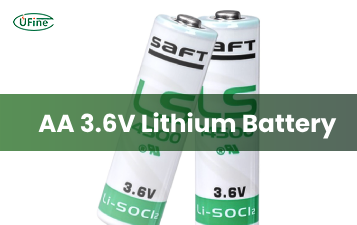
What You Need to Know About AA 3.6V Lithium Battery
Learn all about AA 3.6V lithium batteries—voltage, size, capacity, uses, and the best replacements. Discover why they’re powerful, and highly reliable.
What Are Lithium Salts and Why They Matter in Battery Electrolytes
Lithium salts in electrolytes are key to battery performance, powering everything from phones to EVs and shaping the future of clean energy.
Lithium AAA Battery Guide: Power, Performance & Chargers
Explore lithium AAA batteries—voltage, capacity, weight, top brands, and more. Learn how to choose the best battery for your device and why it really matters.
How to Calculate Watts, Volts, and Amps (With Simple Formulas and Examples)
Learn how to calculate watts, volts, and amps for lithium batteries with simple formulas and examples, ideal for EVs, solar, and energy systems.
Comprehensive Analysis of U.S. Tariffs on Chinese Lithium Batteries
U.S. tariffs on Chinese lithium batteries in 2025 impact costs, supply chains, and EV, energy storage, and electronics industries globally.



